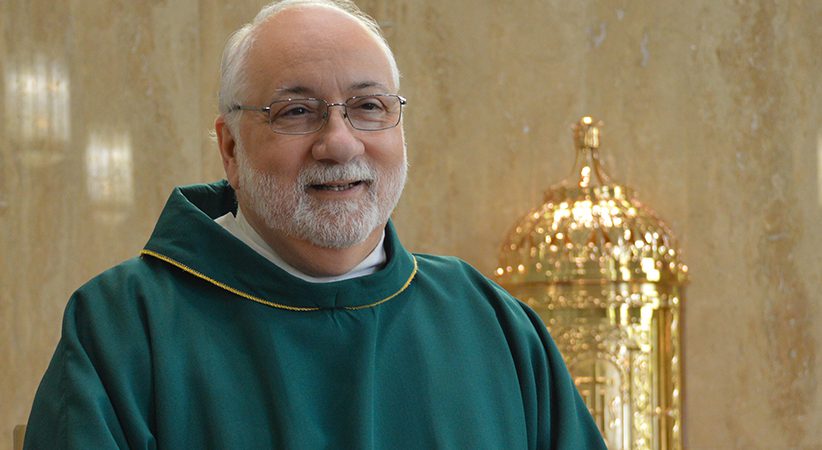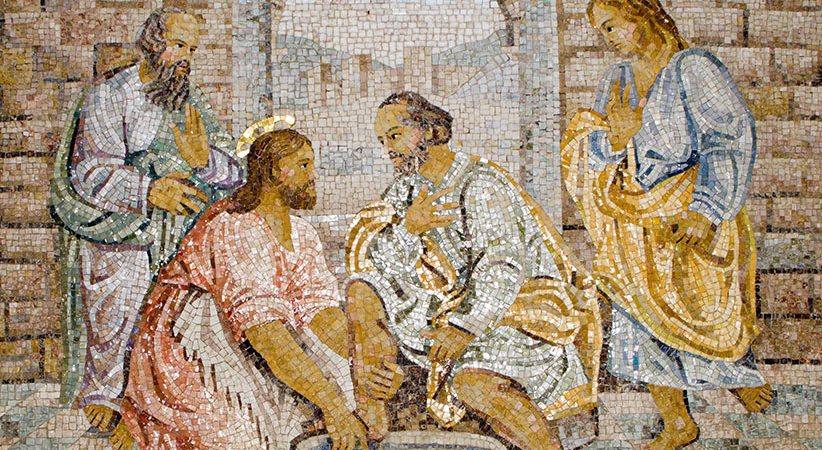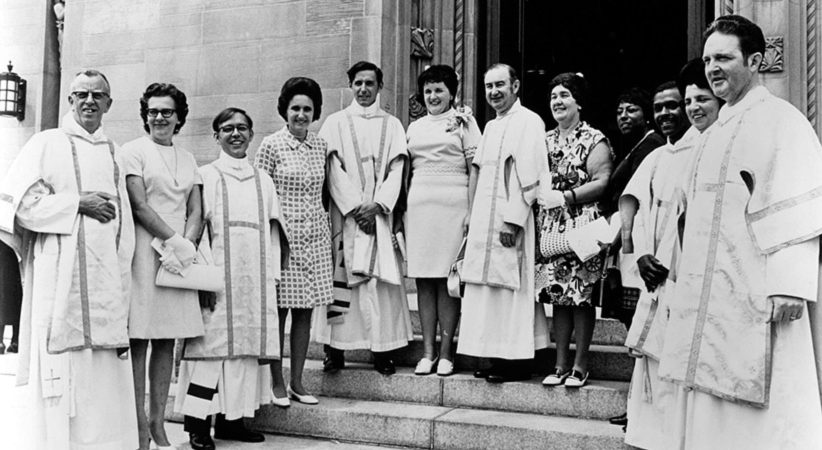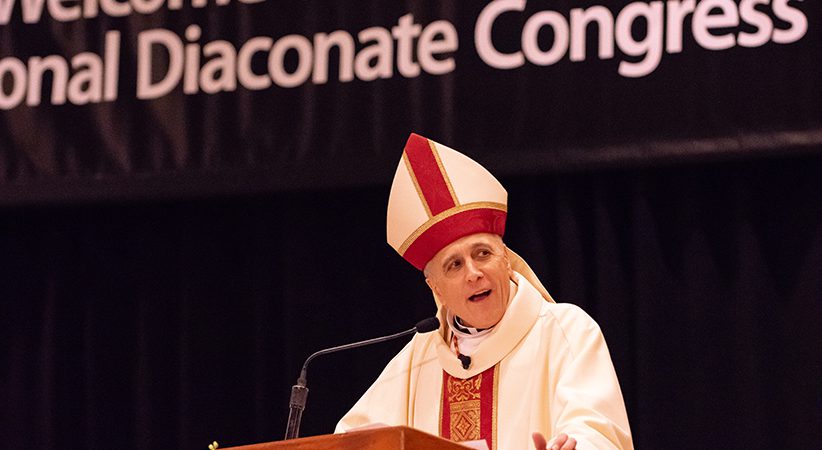A Bishop’s Master of Ceremonies?
A facilitator enables Masses or sacred functions to move with decorum, order and devotion
Deacon Len Penkala 1
As deacons of the Catholic Church, we have been ordained as a “sacramental sign to the church and to the world of Christ, who came to serve, not to be served,” according to the U.S. bishops. This vocation of service is extended to the whole Church, but by virtue of ordination, the deacon is the visible sign of Christ the Servant and is called to serve the servant Church.
As I get the opportunity to travel throughout the Diocese of Joliet, Illinois, where I am ordained to the diaconate, I am blessed to become acquainted with many deacons. We have over 250 deacons in our diocese. I am constantly humbled by the service that these men (and often their wives) provide. Some serve at their local parish. Others travel distances to serve at nursing homes, hospitals, food pantries and prisons. They serve in many capacities such as hospice care, aiding those in need, spiritual direction, spiritual formation, sacramental preparation, evangelization and countless other ministries. They serve not just for philanthropic endeavor, but to bring Christ to everyone everywhere.
As I hear about these amazing servants throughout the diocese, I more clearly understand that nothing in life is more fulfilling or satisfying than using our God-given talents and gifts to serve others in a way that helps them on their earthly journey toward the kingdom of God.
A life in service to Christ and his body, the Church, is a life that gives praise to the Lord.
Master of Ceremonies
Earlier this year, I was appointed by the bishop of the Diocese of Joliet to be the diocesan master of ceremonies.
You may wonder what that means. According to the General Instruction of the Roman Missal, “It is desirable, at least in cathedrals and in larger churches, to have some competent minister or master of ceremonies, to see to the appropriate arrangement of sacred actions and to their being carried out by the sacred ministers and lay faithful with decorum, order, and devotion.” (No. 106).
At first glance, it may seem like I am the liturgy police. But, as I have traveled throughout the diocese, to about one-third of our parishes so far, I have come to realize that I serve not only the bishop but the pastors and other priests in attendance. I serve the deacons, altar servers, lectors and other ministers involved in the sanctuary. I serve the parish liturgist, catechists, musicians and even the lay faithful. I serve in this capacity in the hopes of sharing with others the blessings and grace that I receive through the sacred liturgy.
The sacred liturgy has always lifted me up and filled me with the joy of the Holy Spirit. As a student in a Catholic elementary school, and later as a high school seminarian, few things made me feel the presence of the Lord more than the active participation in the liturgy. Morning prayer, evening prayer, night prayer and daily Mass always included praying together, chanting and singing and reflecting on the Scriptures. The bigger the liturgy, the more you could feel being part of the whole Church as we raised our voices as one to the Lord. I was even blessed with the opportunity to sing in the choir at deacon ordinations, priest ordinations and the installation of a bishop. I still get goosebumps when I think about those liturgies. You could just feel the presence of the Holy Spirit.
Sharing the Spirit
My hope now is to share that same Spirit with as many people as I can through the careful planning and implementation of each rite according to guidelines in the Roman Missal. In this way, I hope to serve others on their spiritual journey toward the kingdom of God.
My job starts as soon as the Mass or liturgy has been put on the bishop’s calendar. I contact the liturgist, sacristan and pastor or rector of the church or Catholic institution that is hosting the event. I help them with the planning of the liturgy, including readings, prayers, vestments, required number of ministers and the items they need to have on hand that day.
When I arrive on the day of the liturgy, I meet with any concelebrating priests, deacons, altar servers and sometimes the lectors and music ministers to make sure each knows when and how to perform their liturgical functions. I give special attention to those parts of the liturgy that are different than what they are used to doing.
At the same time, I try not to change the way they typically perform their ministry, unless it is clearly misguided. I check the Lectionary to make sure it is set to the appropriate readings. I check the Book of the Gospels, the missal and any other liturgical books or binders that will be used during the liturgy. I also check other items that will be used such as oils, holy water and incense.
I check on the seating arrangement for any ministers involved in the liturgy and, in particular, where clergy will be seated. Some clergy may be seated in the sanctuary and some may be seated with the congregation. This will impact the distribution of Communion, the use of incense and flow of the processions at the beginning and end of the Mass.
During the liturgy, I try to be in close proximity to the various ministers when it is time for them to perform their ministry. I try to be close enough to give acknowledgment, signals or sometimes even verbal communication to remind or assist them, yet I want to be as unnoticeable as possible to the congregation. My presence should not draw attention but should keep the liturgy flowing and reverent. Much like altar servers at a Sunday Mass, my actions should be purposeful and reverent, yet not a point of focus for the congregation.
I direct the order of processions in and out of Mass, and any procession or movement from the chair to the ambo, the altar or other parts of the church. So, if there is a Eucharistic procession, a sprinkling rite, the use of incense or oils or any other ritual movement, I lead or direct the movement to ensure sacred actions are carried out with reverence and proper decorum.
Hopefully, if I serve well, everyone in the church from the bishop to the people seated or standing in the back can prayerfully participate in the liturgy without distraction or confusion. As I stated earlier, the sacred liturgy has always lifted me and filled me with the joy of the Holy Spirit. I serve in this capacity to share with others the blessings and graces that I receive through the sacred liturgy. If I serve well, then I hope to share that grace.
“All, therefore, whether ordained ministers or lay Christian faithful, in fulfilling their function or their duty, should carry out solely but totally that which pertains to them” (GIRM, No. 91).
I hope that through my service, each minister and member of the faithful is able to prayerfully celebrate this “sacrament of unity” (Sacrosanctum Concillium, No. 26) as the One Body of Christ.
DEACON LEN PENKALA was ordained in the Diocese of Joliet in 2016 and serves at St. Raphael Catholic Church in Naperville, Illinois, and as the diocesan master of ceremonies.






Comments are closed.